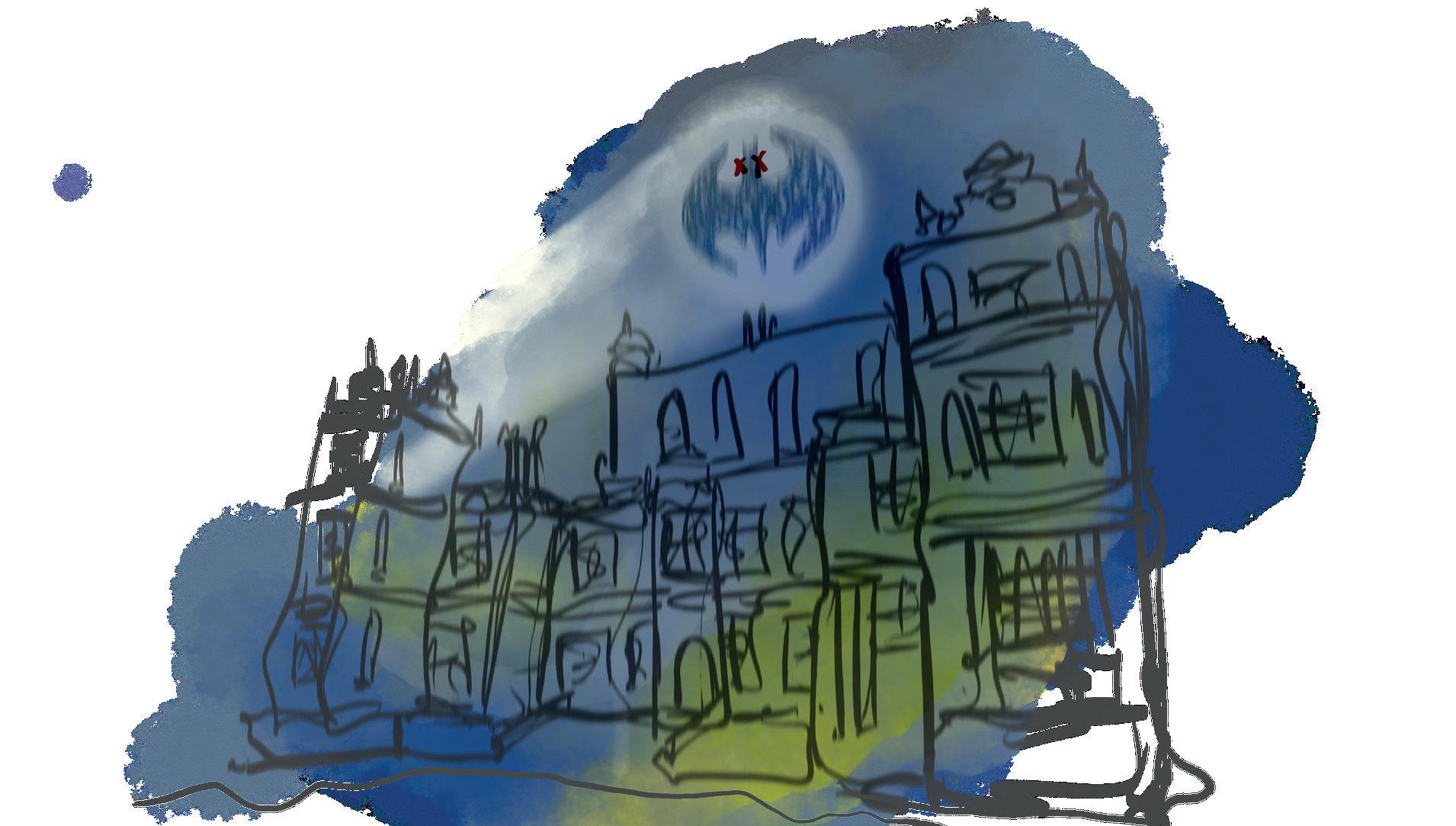
5 minute read
Depicting Nottingham’s Underworld On Screen 36 UoN’s 36 -37
Nottingham’s history within film is rather limited and subdued: it’s not a city familiar with the big screen, glorified by big sweeping shots like we see of London. However, that’s not to say its history is non-existent. In fact, many areas around the city were used within the production and shooting of films. What’s more, a common trend emerges when exploring Nottingham’s history in the film industry: crime. Sam Barnes takes a look at the most iconic depictions of crime in Nottingham.
The city and county has a unique history with criminals that differentiates it from all other towns and cities in the country. Crime holds an integral place in Nottingham’s history, yet, it’s not a straightforward relationship. In contrast to other cities, Nottingham doesn’t pride itself on its obscure nobles and businessmen from the past, but rather its criminals. No well-known aristocrats are placed on pedestals by this city. Instead, legendary figures - who are criminals no less - tend to uphold the ideas and the values of Nottingham.
Advertisement
Robin Hood, a well-known figure to those both local to Nottingham and not, is the city’s mascot and one of the most well-loved folk heroes of the UK. However,he doesn’t quite fit the ideal of a conventional hero. Numerous
retellings have told the famous tale of an unlikely outlaw, who, with his Band of Merry Men, ‘robs from the rich and gives to the poor!’ These adaptations range from Disney’s 1973 Robin Hood animation to the 2010 action film starring Russell Crowe.
Nottingham’s history of rebellious figures doesn’t just end there. The same praise is said for Ned Ludd, the supposed leader of the Luddites. Similar to Robin Hood, the movement saw the creation of one singular fictional figure in Ned Ludd, to represent their struggle.
In modern media, many may know of them thanks to Horrible Histories - a TV show I think we can all appreciate for teaching us many great things. The catchy punk song inspired by bands like The Clash and the Sex Pistols told us how the Luddites rose up against their employers who had begun to exploit them with the invention of new technology.
Behind the camera, Nottingham’s link to crime-fighters and vigilantes persists. Jumping from the pages of comic books, DC’s Batman has a well-connected history with Nottingham. For one, the small village south of the city provided the inspiration for the Caped Crusader’s own fictional setting of Gotham. More recently, when shooting Christopher Nolan’s The Dark Knight Trilogy (2008-2012), Nottingham became his home, as our very own Wollaton Hall was transformed into Wayne Manor, bringing its stellar cast such as Christian Bale and Anne Hathaway to the grounds and the surrounding city.
The manor is prevalent during much of the final instalment in the trilogy, The Dark Knight Rises (2012). Wollaton Hall, which for a century prior had served as a museum, was brought back to life as a large stately home. The vast and beautiful grounds of Wollaton as we know them were transformed by Nolan into the brooding, gloomy atmosphere that matches the rest of Batman’s city of Gotham. The outer grounds and many of the rooms were refurbished and cleared of tourist facilities to allow the hall to feel alive and lived in once again.
Overall, the setting of Wollaton for the location of Bruce’s home provided people who are already familiar with the house a unique opportunity to witness what it could have looked like in all its glory, hosting functions, with lavish décor.
This is not to say that Nottingham’s history of famous criminals was all positive. Recent television programmes have shown the darker side of crime within the city, and these depictions cannot be ignored such as the recent drama series, Landscapers (2021).
The drama follows the murders of William and Patricia Wycherley in 1988 by their daughter, Susan and her husband, Christopher Edwards, detailing how the pair kept their crime hidden until 2013. In Landscapers, the history of criminal exploits previously told through fun action flicks and songs is replaced with a dark drama that presents the criminal reality in and around our city.
The mood is set for the series with an opening shot of the Market Square on a rainy night. We see the latenight trams, the stone lions, and yet everything just seems off. We are taken to the places we know and love, places where many of us frequent, and yet we are seeing a side to it that is thankfully hidden from us in our daily lives.
The city embodies the gloomy, eerie atmosphere of the unsettling events that occurred, a stark contrast to the celebratory nature often associated with criminals that we are all too used to thanks to the tales of Robin Hood and Ned Ludd.
We cannot ignore Nottingham’s distinct approach to tackling its criminal past. It depicts criminals and vigilantes in a positive light through folklore and fiction as they take justice into their own hands. Characters born of legend symbolise movements and ideas supported by our city.
By Sam Barnes
Illustrations by Karina Pang
Page Design by Catrin Dimond










